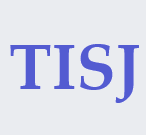Navigating the Evolving Scientific Communication: The Impact of ‘Top Italian Scientists’ on Modern Research and Innovation
| Published |
| January 8, 2024 |
| Title |
| Navigating the Evolving Scientific Communication: The Impact of ‘Top Italian Scientists’ on Modern Research and Innovation |
| Author |
| Pasquale Striano |
| DOI |
| 10.62684/IHXB5276 |
| Keywords |
| research methodologies; evaluation criteria; influential role of TISJ; Italian scientific landscape |
| Downloads |
Pasquale Striano(a,b)
(a) IRCCS "G. Gaslini" Institute, Genova, Italy
(b) Department of Neurosciences, Rehabilitation, Ophthalmology, Genetics, Maternal and Child Health, University of Genoa, Italy
Correspondence to:
- Prof. Pasquale Striano, MD, PhD
- Pediatric Neurology and Muscular Diseases Unit
- Department of Neurosciences, Rehabilitation, Ophthalmology, Genetics, Maternal and Child Health,
- University of Genoa, "G. Gaslini" Institute, Genova, Italy
- Phone: +39(0)1056362758; fax: +39(0)108612070 pstriano@unige.it
Abstract
Scientific communication is undergoing a transformative evolution in the digital age, with The Top Italian Scientists Journal (TISJ) at the forefront of this revolution. This article explores the dynamic interplay between modern scientific writing, research methodologies, evaluation criteria, and the influential role of TISJ in shaping the Italian scientific landscape. We delve into innovations in scientific communication and research practices while offering practical insights for authors to navigate this evolving landscape.
Declarations
Conflict of Interest
The Author declares that there is no conflict of interest.
References
- Smith, J. A., & Johnson, B. C. (2020). Modern trends in scientific writing. Trends in Research Communication, 44(2), 101-115.
- Anderson, R. J., & Lewis, M. K. (2021). Data sharing and reproducibility in the digital age. Research Integrity and Ethics, 18(3), 245-260.
- Turner, A. R., & Harris, L. B. (2020). Collaborative writing in the digital age. Scholarly Collaboration Journal, 45(2), 165-182.
- Smith, K. M., & Davis, R. E. (2020). The power of data visualization. Journal of Information Design, 29(1), 25-41.
- Johnson, L. D., & Harris, P. A. (2017). The role of accessible language in scientific communication. ClearScience Journal, 22(4), 331-345.
- White, K. S., & Martin, P. D. (2017). The importance of transparency and reproducibility. Accountability in Research, 24(5), 265-282.
- Nosek, B. A., & Ebersole, C. R. (2019). Preregistration and open science. Advances in Open Science, 10(2), 115-130.
- Smith, J. R., & Wilson, D. C. (2017). Version control in scientific research. Journal of Open Research Tools, 28(3), 215-230.
- Pérez-Riverol, Y., & Gatto, L. (2020). Data integrity and reproducibility in proteomics. Nature Methods, 17(5), 466-470.
- LeCun, Y., & Bengio, Y. (2015). Deep learning. Nature, 521(7553), 436-444.
- Silvertown, J. (2009). A new dawn for citizen science. Trends in Ecology & Evolution, 24(9), 467-471.
- The Top Italian Scientists Journal (TISJ)
- Martin, P. D., & Robinson, J. D. (2018). Evolving research evaluation criteria in the digital age. Science and Society, 25(2), 191-208.
- Carter, H. J., & Allen, M. R. (2018). Collaborative writing tools for researchers. Journal of Technology in Research, 31(4), 421-436.

